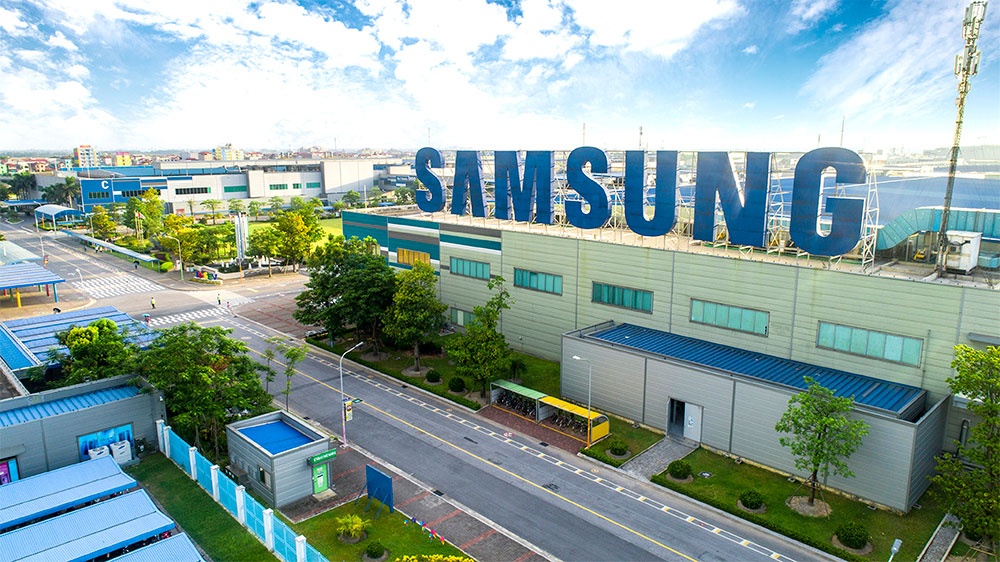Samsung Display, renowned for researching and manufacturing LCD and OLED screens with state-of-the-art technology for phones, TVs, and computers, faces continued challenges in the display segment.
Samsung Electronics has just released its financial report for Q1/2024, posting revenues of approximately 71.920 trillion won ($54 billion). The company's four factories in Vietnam contributed about 30% to this, equivalent to $16.25 billion.
Notably, despite many factories recovering from losses compared to Q4/2023, profits for Samsung Display Vietnam (SDV) and Samsung Electronics HCMC CE Complex (SEHC) still saw significant declines.
Specifically, in the first three months of 2024, Samsung Display Vietnam recorded revenues of 3.580 trillion won ($2.65 billion), a 31% decrease compared to the same period last year. The company's profit also dropped sharply to 167.8 billion won ($123 million), a 63% decline.

As of March 31, 2024, the total assets of Samsung Display Vietnam stood at 6.074 trillion won ($4.4 billion), with liabilities amounting to 1.448 trillion won ($1.05 billion).
In Vietnam, Samsung Display continues to research and manufacture various types of LCD and OLED screens, using the most advanced technologies for phones, TVs, and computers. Samsung Display began its investment in Vietnam in 2014 with an initial capital of $1 billion. Just a year later, the company increased its investment to $4 billion, and by 2017, it reached $6.5 billion.
Currently, the Samsung Group operates mobile phone manufacturing plants in Bac Ninh and Thai Nguyen, along with the Ho Chi Minh City Home Appliances Complex (SEHC), Samsung Display Vietnam (SDV), and the Hanoi R&D Center. The cumulative investment to date totals $22.4 billion.
Samsung Group also plans to invest an additional $1 billion annually in Vietnam in the coming years.
Similar to SDV, Samsung Electronics HCMC CE Complex (SEHC) also reported a 72% decrease in profits for Q1/2024, standing at 55 billion won ($40.7 million).
Currently, SEHC is also manufacturing TVs and other Samsung home electronic devices.
Contrary to the display sector, Samsung Thai Nguyen continues to be the facility contributing the most revenue and profit, with respectively $8.16 billion and $707 million. Following it is Samsung Electronics Vietnam with $4.2 billion in revenue and a profit of $300 million.
This outcome is driven by the sales of the Galaxy S24 smartphone series and the high prices of semiconductor memory. Additionally, Samsung's memory division has returned to profitability.
Additionally, the global LCD market is expected to grow by 4% to $78.1 billion in 2024.
Global events like EURO 2024 and the Paris Summer Olympics are expected to boost demand for these products.
Amid the market’s potential growth, Samsung Display is also facing significant challenges as Chinese OLED flexible display manufacturers rapidly advance technology and increase production.
According to Omdia, a UK-based IT consultancy and analytics firm, in the first half of 2024, the shipment of foldable OLED displays from China is expected to reach 6.4 million units, surpassing Samsung Display's 5.7 million units in South Korea.
Notably, foldable OLED displays produced in China are expected to account for 53% of the total market share of shipped foldable OLED displays during this period.
Historically, Samsung Display and Samsung Galaxy Fold have been pioneers in the foldable smartphone display market.
However, Chinese brands such as Huawei, Honor, Oppo, Vivo, Xiaomi, Transsion, ZTE, and Lenovo MOTO are rapidly catching up by launching new, improved foldable display products.
These innovations have led to successful designs in new foldable display models from Chinese smartphone and OEM brands such as Huawei, Honor, Lenovo MOTO, Oppo, Vivo, Xiaomi, Transsion, and ZTE, while Samsung Galaxy Fold mainly incorporates Samsung Display's latest foldable screen technologies.
Beyond just phone screens, a major Chinese tech conglomerate, TCL, is also challenging Samsung in the TV market. Instead of using OLED or QLED, TCL has opted for QD-Mini LED technology, further driving breakthroughs and diminishing the revenue and profits of the major players in this market.
Brought to you by MrBeliever.com